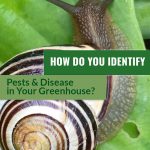


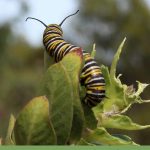
No matter how protected a greenhouse might seem, you, the greenhouse gardener, have to plan for insects and disease. Pest and disease management comes with the territory of being a gardener, there’s just no way around it.
While some insects are beneficial for your plants, others can pose a real problem for your tender crops. Having a few pests in the greenhouse won’t cause severe damage, but large populations can be detrimental to your production. Likewise, diseases that are left untreated can spread rapidly from plant to plant and cause irreversible damage.
As a greenhouse gardener, it’s important that you learn to identify some of the common signs of pests and disease in your greenhouse. To make it easier for you, we’ve identified the top 10 most common greenhouse pests and diseases so that you can control them early and proactively.
1. Aphids
Aphids are small, but they can be very problematic in the greenhouse. It’s easy for these pests to go undetected, but the longer they live in your greenhouse, the greater their infestation becomes. They reproduce quickly, sapping nutrients and spreading viruses as they go. It’s why an infestation can kill your plants and crops before you even realize it.

Signs of infestation
Aphids are small, so it’s easy for them to go unnoticed at first. You’ll know if your plants are infested with aphids if they start growing distorted or the leaves curl inwards. You’ll also see a sticky substance on the stems, which will eventually turn black and moldy.
You may also be able to spot the small insects lurking on the underside of your leaves. Aphids can range widely in color from green, yellow, brown, black, or grey.
Primary causes
Aphids are naturally drawn to greenhouses because of the food that lies within. However, your plants are more susceptible to these pests when they are hot, stressed, or underwatered. They are also drawn to over-fertilized plants.
Susceptible plants
Squash, cucumber, pumpkin, melon, beans, potatoes, lettuce, beetroot, chard, and bok choy are particularly susceptible to aphid infestations.
2. Powdery mildew
Powdery mildew is a fungal disease that can quickly kill greenhouse plants. It can be tricky to spot before the infection gets severe, but it’s relatively easy to prevent. Ensuring you have the right soil, humidity levels, and watering frequencies will keep it at bay.
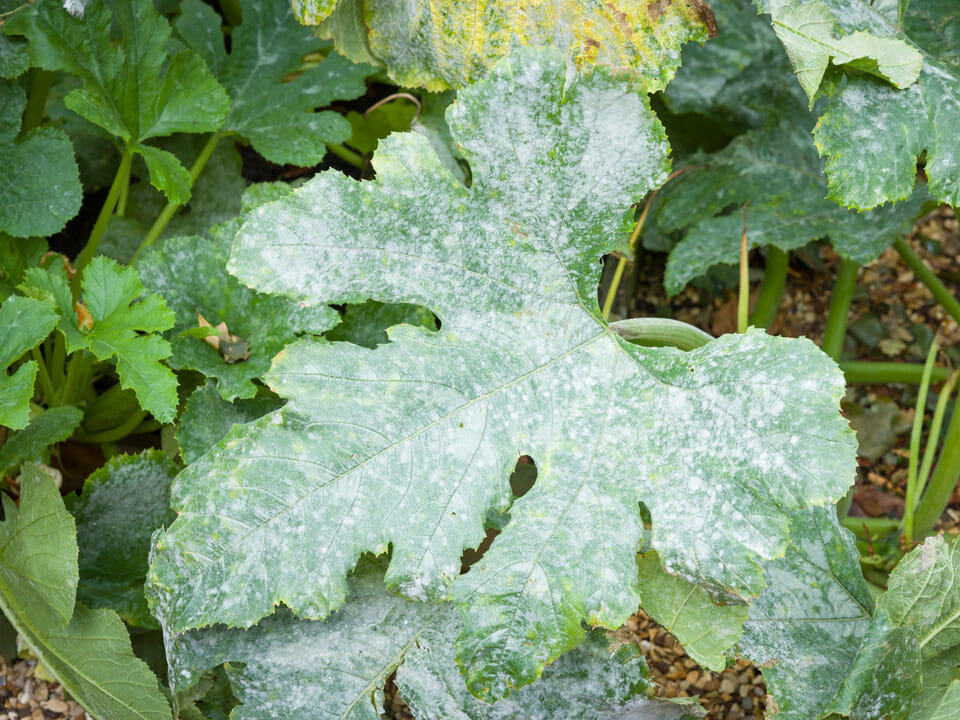
Signs of infection
Plants infected with powdery mildew often display a white powdery fungus on their leaves, flowers, and/or fruit. The fungus can appear in large spreads or very small clusters. When small or sparse, the disease can be tricky to identify.
In some cases, powdery mildew can appear overnight. If left untreated, you may notice that your plants’ growth is stunted, distorted, or even discolored. Powdery mildew can also cause new flowers to rot or fall off.
Primary causes
Various conditions can cause a powdery mildew infection in your plants. The most common causes are overwatering, planting in poor draining soil, or routinely exposing your plants to drought-stress. Overfertilization can also be a leading cause, particularly with feeds containing high amounts of nitrogen.
In some cases, powdery mildew spawns when plants don’t have enough breathing space. Planting seeds too close together or neglecting pruning responsibilities can lead to poor air circulation between individual plants, creating the perfect moist conditions for powdery mildew to thrive.
Susceptible plants
Apples, blackcurrants, gooseberries, grapes, zucchini, cucumbers, peas, daisies, rhododendrons, and roses.
3. Whiteflies
Whiteflies can cause huge problems in your greenhouse. They feast on fleshy leaves, impacting the plant’s ability to photosynthesize. As a result, plants infested with whiteflies can experience stunted growth.
In extreme cases, whiteflies can damage the leaves to such an extent that the plant dies.

Signs of infestation
You can tell if you have whiteflies in your greenhouse by looking at the leaves on your plants. Whiteflies pierce the foliage and suck out the sap until leaves become faded, dry, and sometimes sticky to the touch.
Primary causes
More often than not, whiteflies find their way into a greenhouse through imported seedlings. If you buy a seedling infested with whiteflies or their eggs, and you plant it in the greenhouse, you can unwittingly infect the rest of the greenhouse. To prevent this, make sure to check new plants and seedlings before bringing them into the greenhouse.
However, whiteflies can also make their way into a greenhouse naturally. They are particularly attracted to debris and rotting plant material, so the best way to avoid an infestation is to maintain a clean greenhouse.
Susceptible plants
Eggplant, okra, sweet potatoes, tomatoes, peppers, cucumbers, strawberries, and cabbages.
4. Fungus gnats
Fungus gnats are one of the most common greenhouse pests. They’re increasingly difficult to eradicate, so it’s best to get rid of fungus gnats quickly if you find them in your greenhouse. One adult female fungus gnat can lay as many as 100-150 eggs in your soil in less than a week, so it’s easy for an infestation to grow out of control!
Signs of infestation
It’s easy to spot whether you have a fungal gnat infestation in your greenhouse. The small flies will be hovering around your soil, the leaves of your plants, and the area around your plants. Because they nest in the soil, you can tell if a plant is infested with fungus gnats by disturbing the soil and seeing if any flies emerge.
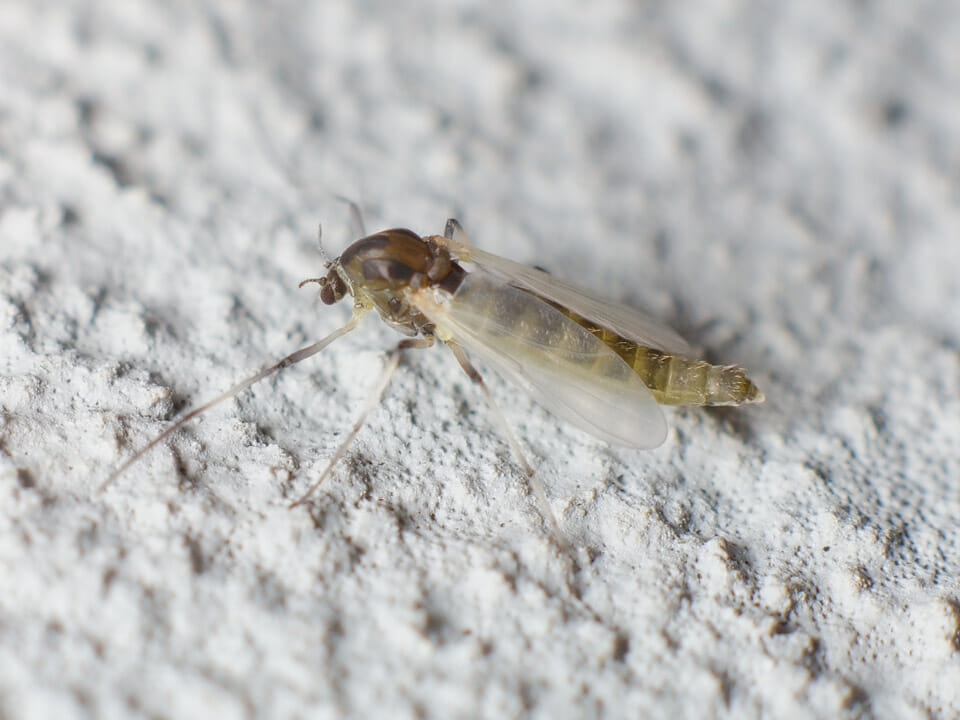
Primary causes
Fungus gnats breed readily whenever your soil or the air around it stays moist. While the actual gnats won’t cause a problem in your greenhouse (other than an inconvenience), the eggs can. The larvae feed on your mulch, soil nutrients, and plant roots. This can cause your plants’ growth to be stunted, resulting in a lower crop yield.
Susceptible plants
Any plants, because they breed in the soil and feed on plant roots.
5. Thrips
Thrips are small sucking insects that feed on the sap from foliage and flowers. The damage isn’t always noticeable to the naked eye, but it can be problematic in other ways. These pests can cause distorted growth to the plant’s leaves and prevent flower buds from forming properly or opening.
Signs of infestation
Plants infested by thrips become dull, damaged, and discolored. When thrips attack the leaves, they drain them of their nutrients. This creates a silvery, shimmering pattern. The leaves might also have black or brown spots, caused by the excrement of these pests.
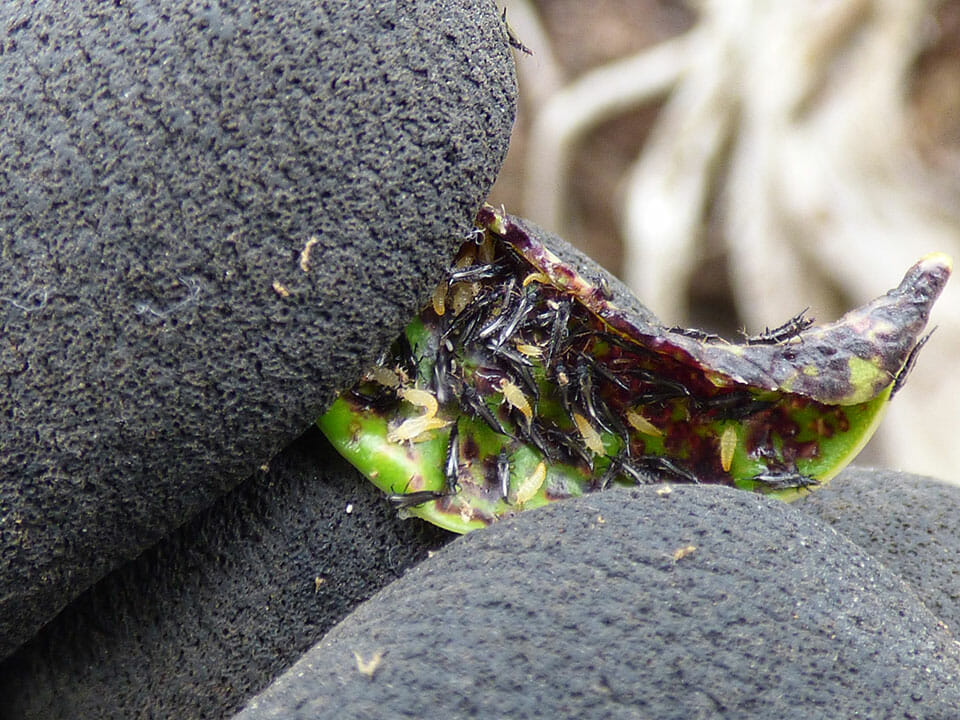
Primary causes
There are many different species of thrips, but greenhouse thrips are the most common type found in greenhouses. Usually, thrips are caused by poor greenhouse conditions and overfertilizing plants. They can develop anytime throughout the year and multiply extremely quickly.
Susceptible plants
Any plants, particularly honeysuckle, onions, leeks, tomatoes, cucumber, and garden peas.
6. Caterpillars
Caterpillars aren’t always considered a problem in your greenhouse. But, left unchecked, they can become disastrous. They can chomp away at the leaves of an entire plant, which can kill it or significantly reduce its yield.
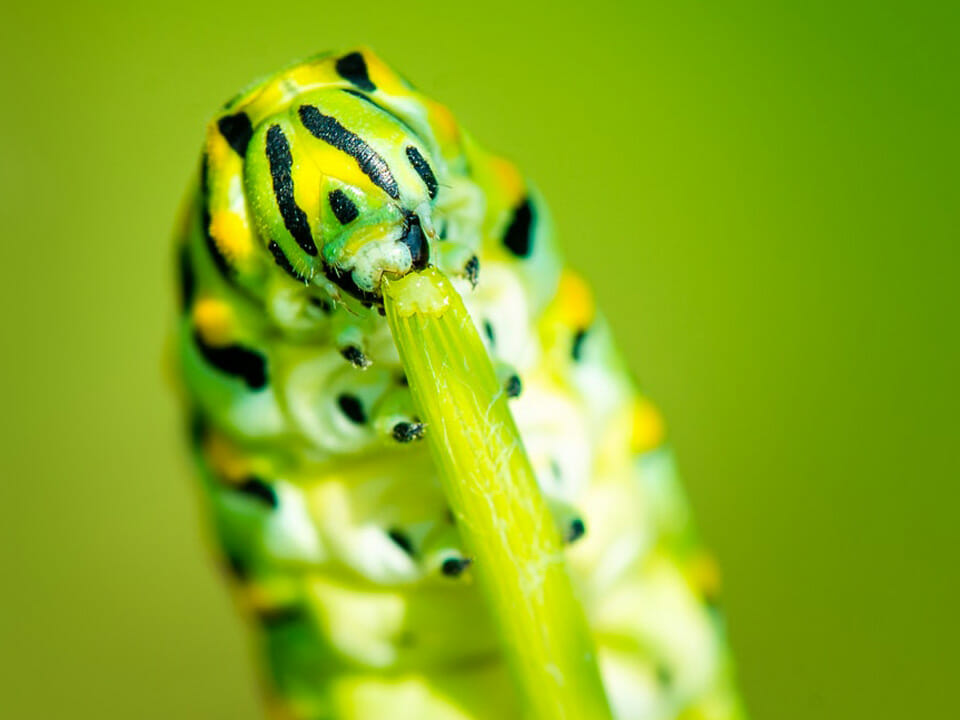
Signs of infestation
You can usually tell if your greenhouse has caterpillars if you spot them on your plant leaves. They are often long, hairy, with lots of tiny legs. Most greenhouse caterpillars are either green or brown in color, though in general caterpillars vary widely in color.
If you can’t see any caterpillars, still inspect your plant leaves regularly for possible damage. The leaves will be visibly eaten away, with small holes, uneven edges, or large chunks missing. Caterpillars are often known to eat entire leaves, so you may also have missing foliage if caterpillars have invaded your greenhouse.
Primary causes
It’s quite easy for caterpillars to nest in your greenhouse. Butterflies or moths enter through doors, windows, or other openings and lay eggs on your plant leaves. Once hatched, caterpillars emerge and spread from plant to plant.
Susceptible plants
Cabbage, lettuce, kale, tomatoes, and any other herbaceous plants.
7. Slugs and snails
Slugs and snails are another common greenhouse pest. They can eat entire crops, including the leaves, stems, vegetables, and fruits. But that’s not the only reason they are a major problem in greenhouses. They also sap the nutrients from the soil, which can impact plant growth.
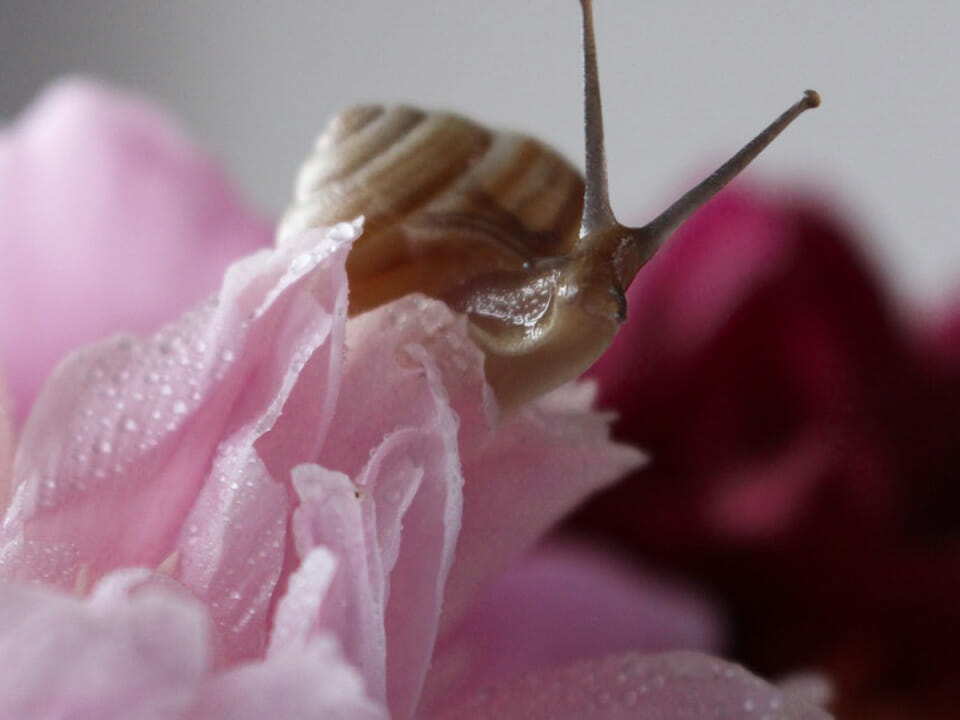
Signs of infestation
Because they all cause similar damage, it can be tricky to determine whether your greenhouse is infected by slugs, snails, or caterpillars. A key difference is that slug or snail bite marks will often contain a sticky residue as well as chomp marks.
Primary causes
Slugs or snails can enter a greenhouse through openings such as doors, windows, gaps, or cracks. They can also be brought in via pots, bags of soil, or dirty garden tools. They’re most likely to stick around and lay eggs if conditions are wet and humid.
Susceptible plants
All leafy plants, especially lettuce, cabbage, strawberries, peppers, zucchini, pumpkin, cucumber, kohlrabi, beans, celery, buckwheat, cress, asparagus, carrots, and peas.
8. Shore flies
Shore flies are small, flying insects that look like fungus gnats. However, they don’t actually eat your plants. Instead, they hover around your greenhouse and eat build-ups of algae. They are mostly a nuisance, but they can cause problems with your crops, too.
Signs of infestation
Even though they don’t eat your plants, shore flies will frequently land on them. This can infect your plants with harmful diseases or fungal spores. Different fungal infections can impact plants in varying ways. For example, you might notice leaf-yellowing, rotting, and wilting if shore flies have brought an infection into your greenhouse.
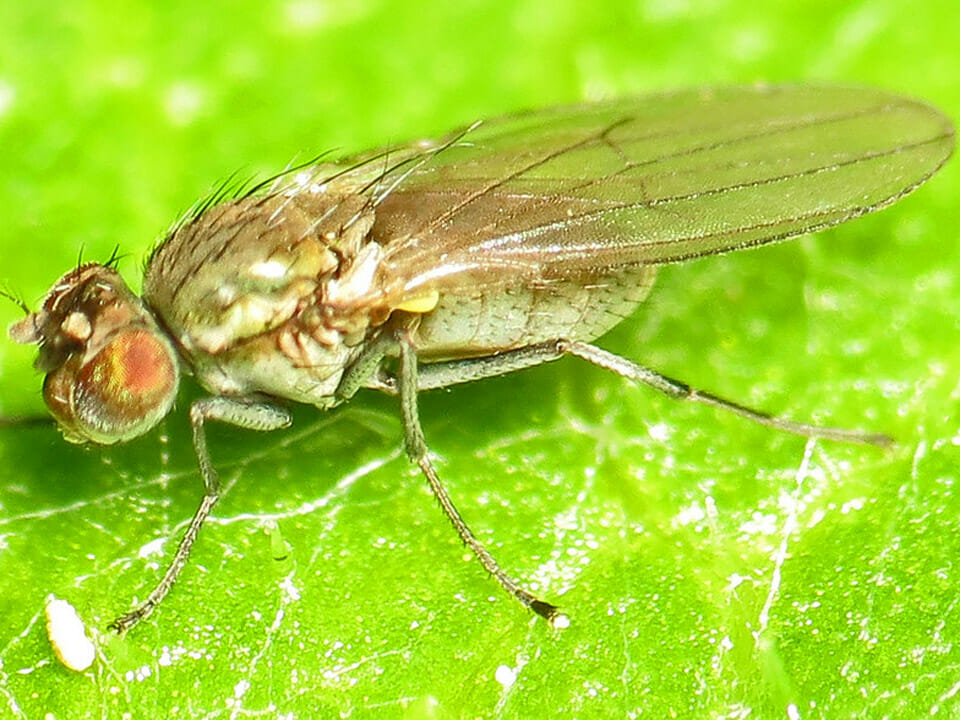
Primary causes
It’s easy to end up with shore flies in your greenhouse. They thrive in damp areas and are usually found near ponds and lakes where algae is present. When greenhouses get wet, whether due to excessive irrigation or humidity, algae can build up on shelves, windows, glazing, or on the floor. Shore flies spawn in these build-ups and breed quickly.
Susceptible plants
They don’t eat plants, but feed on algae build-ups instead. However, most plants can be affected by the spread of disease from a shore fly infestation.
9. Mites
Mites are another common greenhouse pest. These tiny, eight-legged creatures are part of the spider family and have the appearance to match. They can slowly munch away at your plants and weaken them. They can also spread various diseases around your greenhouse.
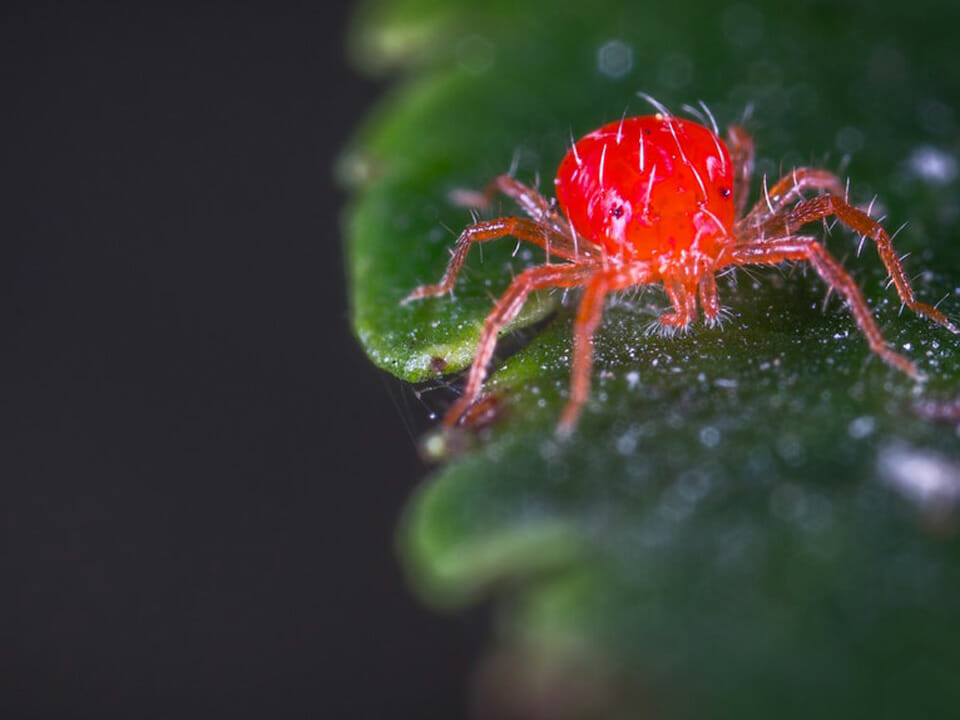
Signs of infestation
Because they’re so small, it can be hard to spot a mite infestation in your greenhouse. Even though they feast on plant leaves, their impact is almost unnoticeable at first. You can usually tell if you have mites in your greenhouse if the leaves are dotted with tiny black, brown, or red spots. Sometimes, the mites will web around the leaves, too.
While they may not sound like a major problem, mites can be dangerous to your plants. Feasting on the leaves will eventually cause them to dry, wilt, and fall off. This can impact the strength of your plants and cause them to die prematurely.
Primary causes
Spider mites thrive in moist environments, which is why greenhouses are so attractive to them. But the biggest cause of spider mites in the greenhouse is overfertilization. Too much nitrogen can make your plant sap sweeter, which is what can attract spider mites to infest your greenhouse.
Susceptible plants
Peaches, nectarines, cucumbers, tomatoes, eggplant, peppers, and orchids.
10. Black root rot
Black root rot is a common greenhouse disease that can infect almost any plant. It’s a fungal disease that spawns and lives in the soil, making removal extremely difficult. Although it can be hard to spot initially, it’s important to know what to look for to prevent your plants from being destroyed.
Signs of infection
Black root rot is often misdiagnosed as a nutrient deficiency as the symptoms are quite similar. A soil test will confirm the results, but you can often inspect your plant to see if black root rot is present.
If you can see the roots, they might be black, rotted, and falling apart to the touch. You may spot some differences to the actual plant, too, like stunted growth or yellowing leaves.
Primary causes
The fungus that causes black root rot (Thielaviopsis basicola) can easily find its way into your greenhouse. It can travel via wind-blown dust or be found hiding in store-bought soil. Most healthy plants can fight off an infection, but plants that undergo stress are much more susceptible to black root rot.
Like the human immune system, the ability of plants to fight off infections goes down when it undergoes stress. Plant stress can happen when conditions are too hot or too cold, or when your plants have been overfertilized or underwatered. Stressed plants are less likely to fight off black root rot.
Susceptible plants
All plants, as black root rot affects roots under the soil.

11. Botrytis
Commonly referred to as grey mold or bud rot, botrytis is a deathly fungal infection that can cause havoc in a budding greenhouse. Botrytis targets weak or dying plants, making new seeds and harvest-ready crops the most susceptible. When infected, plants are sapped for their nutrients until they die off.
Signs of infection
Initially, an infection of gray mold involves plant leaves becoming dark and soft, often in a circular pattern. When the infection takes hold, a thin layer of gray, furry mold appears on the dark spots. Typically, infestations start on dead, weak, or new leaves, before moving on to established leaves.
Primary causes
Botrytis is primarily spread by pests entering your greenhouse. Thrips and caterpillars, which are problematic in their own ways, are most known for carrying the disease onto your plants. Other causes include not removing dead or dying leaves from your plants, leaving debris on the top layer of your soil, and poor ventilation in your greenhouse.
Susceptible plants
Grapes, strawberries, blackberries, raspberries, gooseberries, beans, cucumber, zucchini, lettuce, tomatoes, and most ornamental plants.
FAQs about greenhouse pests & diseases
What are the best natural methods to control pests in a greenhouse?
Several natural methods can effectively control pests in a greenhouse. These include introducing beneficial insects and predators, traps, manual removal (picking them off by hand or washing plants off with water). Botanical and mineral-based pesticides can also be used (oils, soaps, or substances like diatomaceous earth).
How do I prevent greenhouse pests & diseases?
Any plant you bring into your greenhouse should be inspected for any signs of infestation. Some even add a “quarantine phase” before bringing them into the greenhouse. Strategies such as crop rotation, companion planting, maintaining plant health, proper watering, and ventilation will also help with greenhouse pest prevention.
What damage can greenhouse pests & diseases cause to my plants?
Greenhouse pests & diseases can cause extensive damage to your plants. Greenhouse bugs can feed on plant tissues such as leaves, stems, roots, and fruits, leading to symptoms like yellowing, wilting, stunted growth, or even plant death. Some pests can also spread plant diseases. Additionally, pest infestations can reduce crop yield and quality, affecting the overall productivity of your greenhouse.
Does your greenhouse suffer from other pests and diseases? Tell us about it in the comments!

Jesse James
Jesse James, an Army Veteran, now shares his passion for gardening through engaging articles on Greenhouse Emporium. Leveraging his experience and love for nature, Jesse provides practical advice and inspires others on their gardening journey.

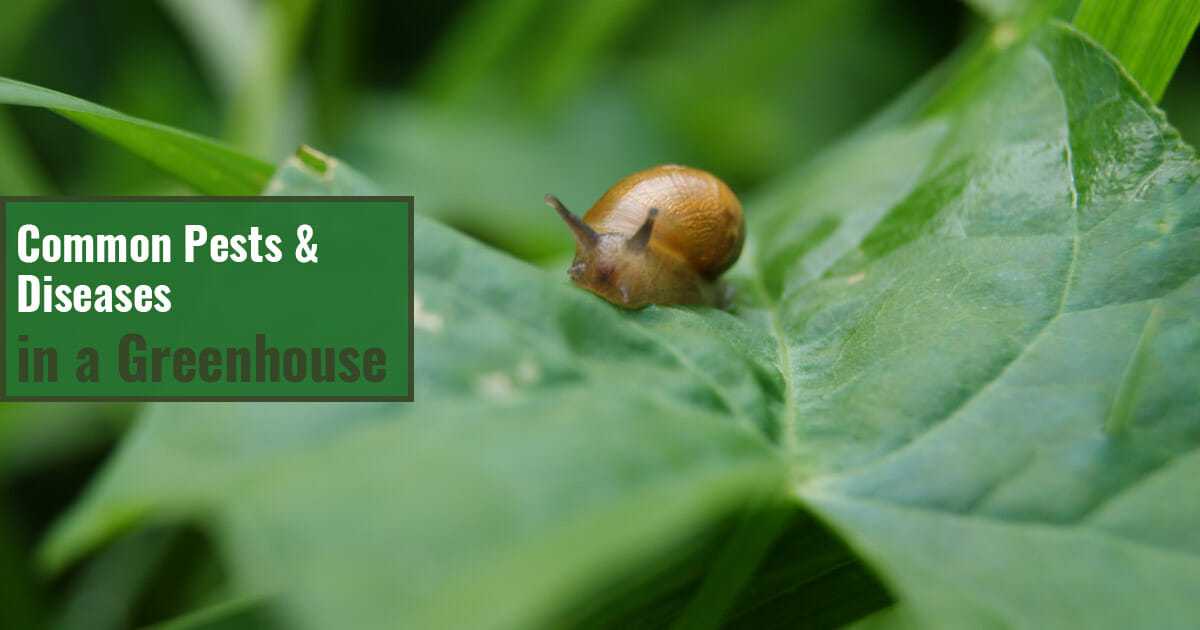






















0 comments
perfectly happy